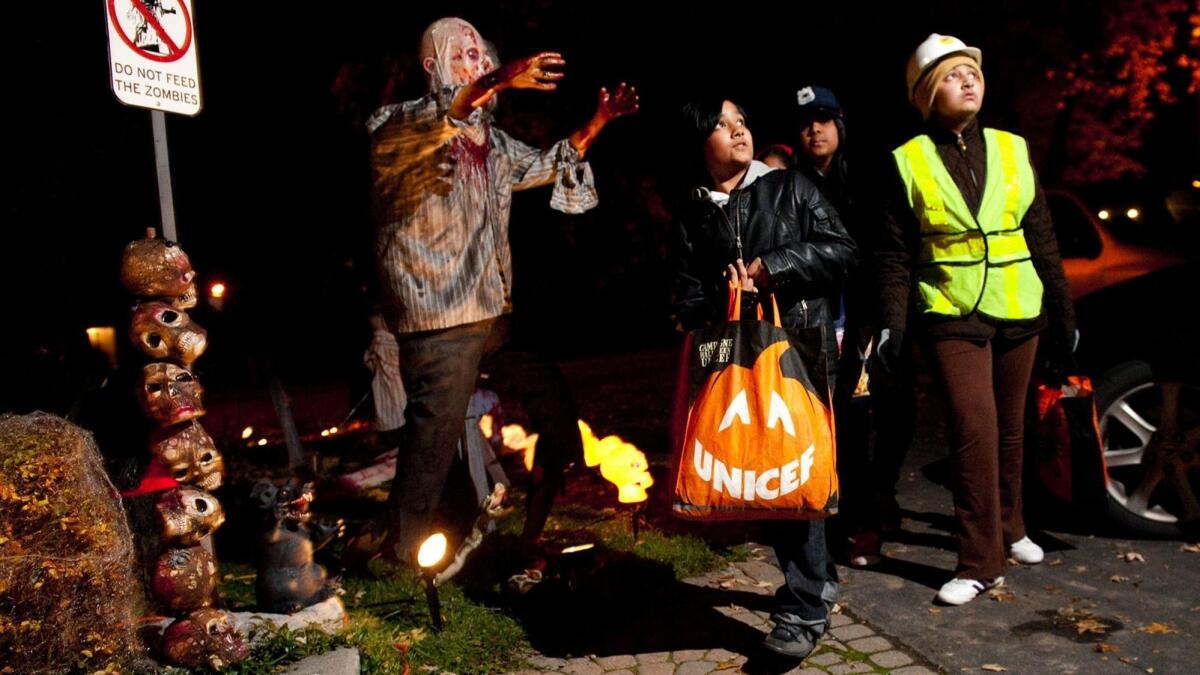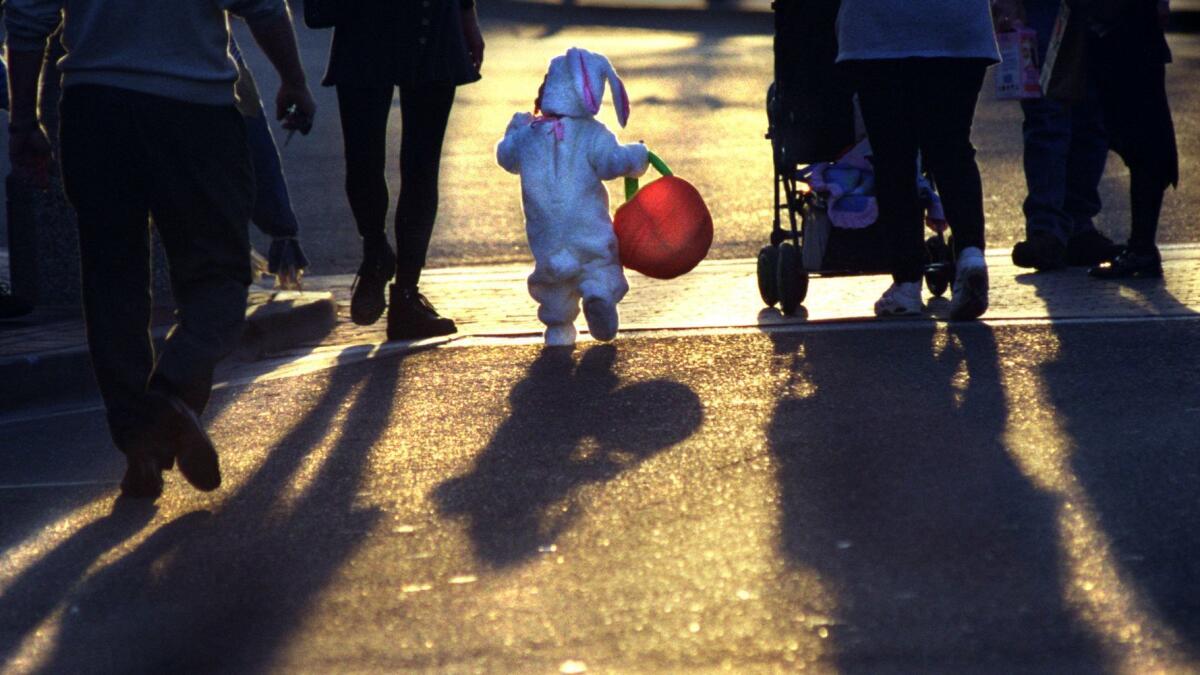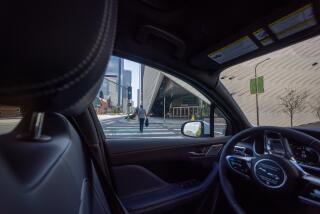What’s truly scary on Halloween? Pedestrians are more likely to be killed by cars

Forget the zombies, ghosts and vampires that pretend to frighten you on Halloween. What ought to scare you to death is the heightened risk of being killed by a car while you’re out trick-or-treating.
During prime trick-or-treat hours, the odds that a pedestrian will be fatally struck by a car are 43% higher than during comparable time periods one week before or after Halloween, according to a new study. For some young children, the risk increases by a factor of 10.
Across the country, these risks added up to an average of 4 additional pedestrian deaths, researchers reported this week in the journal JAMA Pediatrics.
Can too much Halloween candy kill you? This is how much it would take »
There are plenty of reasons to suspect that pedestrians are especially vulnerable on Halloween.
Trick-or-treating begins in earnest as the sun sets, making visibility poor for anyone behind the wheel. Those dressed in costume — especially ones featuring black clothing — may be even harder to spot. People wearing masks often find their peripheral vision impaired.
If the atmosphere is festive, trick-or-treaters may forget to look both ways before crossing a street. Finally, adults who have been drinking could be too impaired to follow basic safety rules.
But these are just theories. To see if their hunch was correct, Dr. John A. Staples of the University of British Columbia and his colleagues examined 42 years’ worth of data from the U.S. National Highway Traffic Safety Administration’s Fatality Analysis Reporting System.
They looked up all fatal pedestrian accidents that occurred between 5:00 p.m. and 11:59 p.m. on the 42 Oct. 31sts between 1975 and 2016. They also looked up fatal pedestrian accidents during the same hours exactly one week prior (on Oct. 24th) and one week after (on Nov. 7).
If there were no added danger, you would expect to find twice as many accidents on the comparison dates (since there were two of them) than on Halloween (only one of these). Instead, they tallied 851 fatal accidents on the comparison dates and 608 fatal accidents on Halloweens — a ratio far less than 2 to 1.

When they examined victims by age group, they saw that some pedestrians were more vulnerable than others.
The relative risk was greatest for children between 4 and 8 — these kids were 10 times more likely to be killed by a car on Halloween than on typical days. Children between 9 and 12 were about 7 times more likely to be killed on Halloween, and the risk for teens ages of 13 and 17 was about double.
The researchers also found that adults in their 30s and 40s faced a small added risk on Halloween that managed to be statistically significant.
The increase in risk was about the same for male and female pedestrians. It was also very similar for trick-or-treaters in the Northeastern, Midwestern and Southern part of the U.S. The risk was lower for those in the west.
The relative risk was slightly higher for trick-or-treaters in rural areas than for those in cities.
If Halloween happened to fall on a Monday, Tuesday, Wednesday or Thursday, the increased risk to pedestrians was greater than when Halloween was on a Friday, Saturday or Sunday. Regardless of the day, the danger was greatest around 6 p.m.
Have some bloody fun this Halloween, courtesy of chemistry »
Although the relative risk that pedestrians would be killed by cars on Halloween was pretty stable during the study period, the absolute risk fell. On Halloween in 1975, there were 4.9 extra deaths per 100 million Americans; by Halloween in 2016, there were 2.5 additional deaths per 100 million people.
The findings underscore the need for measures that would make neighborhoods safer for pedestrians all year round, Staples and his colleagues wrote. They suggested using automated systems to catch speeders and limiting on-street parking so pedestrians are easier for drivers to see.
“Trick-or-treating should not be abolished in a misguided effort to eliminate Halloween-associated risk,” the study authors concluded. “Instead, policymakers, physicians and parents should act to make residential streets safer for pedestrians on Halloween and throughout the year.”
Follow me on Twitter @LATkarenkaplan and “like” Los Angeles Times Science & Health on Facebook.







